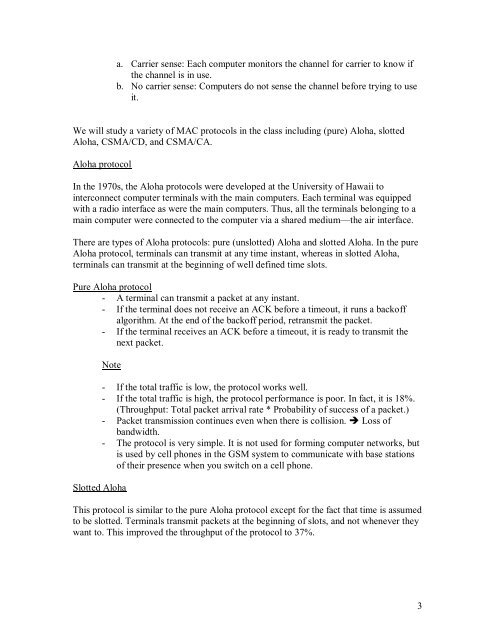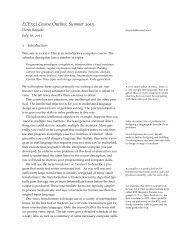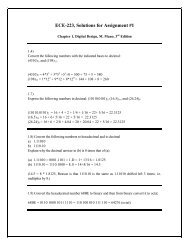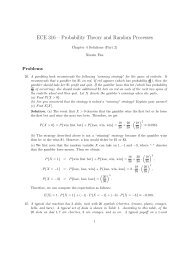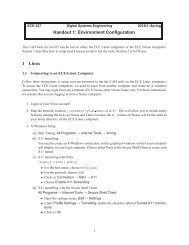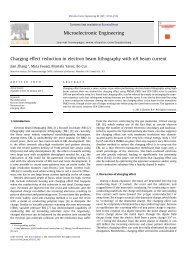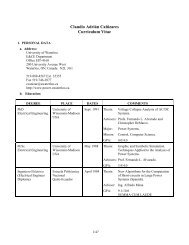LAN - Electrical and Computer Engineering
LAN - Electrical and Computer Engineering
LAN - Electrical and Computer Engineering
You also want an ePaper? Increase the reach of your titles
YUMPU automatically turns print PDFs into web optimized ePapers that Google loves.
a. Carrier sense: Each computer monitors the channel for carrier to know if<br />
the channel is in use.<br />
b. No carrier sense: <strong>Computer</strong>s do not sense the channel before trying to use<br />
it.<br />
We will study a variety of MAC protocols in the class including (pure) Aloha, slotted<br />
Aloha, CSMA/CD, <strong>and</strong> CSMA/CA.<br />
Aloha protocol<br />
In the 1970s, the Aloha protocols were developed at the University of Hawaii to<br />
interconnect computer terminals with the main computers. Each terminal was equipped<br />
with a radio interface as were the main computers. Thus, all the terminals belonging to a<br />
main computer were connected to the computer via a shared medium—the air interface.<br />
There are types of Aloha protocols: pure (unslotted) Aloha <strong>and</strong> slotted Aloha. In the pure<br />
Aloha protocol, terminals can transmit at any time instant, whereas in slotted Aloha,<br />
terminals can transmit at the beginning of well defined time slots.<br />
Pure Aloha protocol<br />
- A terminal can transmit a packet at any instant.<br />
- If the terminal does not receive an ACK before a timeout, it runs a backoff<br />
algorithm. At the end of the backoff period, retransmit the packet.<br />
- If the terminal receives an ACK before a timeout, it is ready to transmit the<br />
next packet.<br />
Note<br />
Slotted Aloha<br />
- If the total traffic is low, the protocol works well.<br />
- If the total traffic is high, the protocol performance is poor. In fact, it is 18%.<br />
(Throughput: Total packet arrival rate * Probability of success of a packet.)<br />
- Packet transmission continues even when there is collision. Loss of<br />
b<strong>and</strong>width.<br />
- The protocol is very simple. It is not used for forming computer networks, but<br />
is used by cell phones in the GSM system to communicate with base stations<br />
of their presence when you switch on a cell phone.<br />
This protocol is similar to the pure Aloha protocol except for the fact that time is assumed<br />
to be slotted. Terminals transmit packets at the beginning of slots, <strong>and</strong> not whenever they<br />
want to. This improved the throughput of the protocol to 37%.<br />
3


